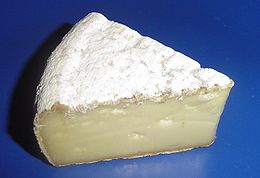 This is a recipe that we learned at the Culture Workshop given by Rex Infanger on March 26, 2012. It’s something that he developed as a way of demonstrating cheesemaking techniques in less than an hour. The result is a tasty Queso Fresco type of cheese with a real cultured flavor given the addition of a cultured dairy product to provide instant acidity.
This is a recipe that we learned at the Culture Workshop given by Rex Infanger on March 26, 2012. It’s something that he developed as a way of demonstrating cheesemaking techniques in less than an hour. The result is a tasty Queso Fresco type of cheese with a real cultured flavor given the addition of a cultured dairy product to provide instant acidity.
Here is a PDF version of the recipe.
QUESO REXO
Makes about 1 pound cheese in about 55 minutes.
1 gallon milk (whole or skim or anything in between)
1 quart cultured buttermilk (mesophilic) OR active yogurt (thermophilic)
0.5 ml double-strength rennet OR 1.0 ml single strength rennet
2.5% salt by weight of the milled curd
Heat milk to 95 degrees F.
Add rennet. When set firm (which shouldn’t take more than 3 to 5 minutes) immediately cut into 1/2 inch cubes.
Stir curds (VERY gently at first) while you raise the heat to 116 degrees F. Once at 116 degrees stir for 15 minutes.
Drain curds into cheesecloth and press with 5 pounds (while keeping the curds warm) for 15 minutes.
Mill curds into small pieces, weigh them, measure out the 2.5% salt (around 0.5 oz or 15 grams), mix, then pack back into the cheesecloth and press with 5 pounds of pressure again for at least 15 minutes before slicing to taste. If you have the time, allow to remain pressing for a few hours before unmolding.
The cheese is ready to eat immediately.

